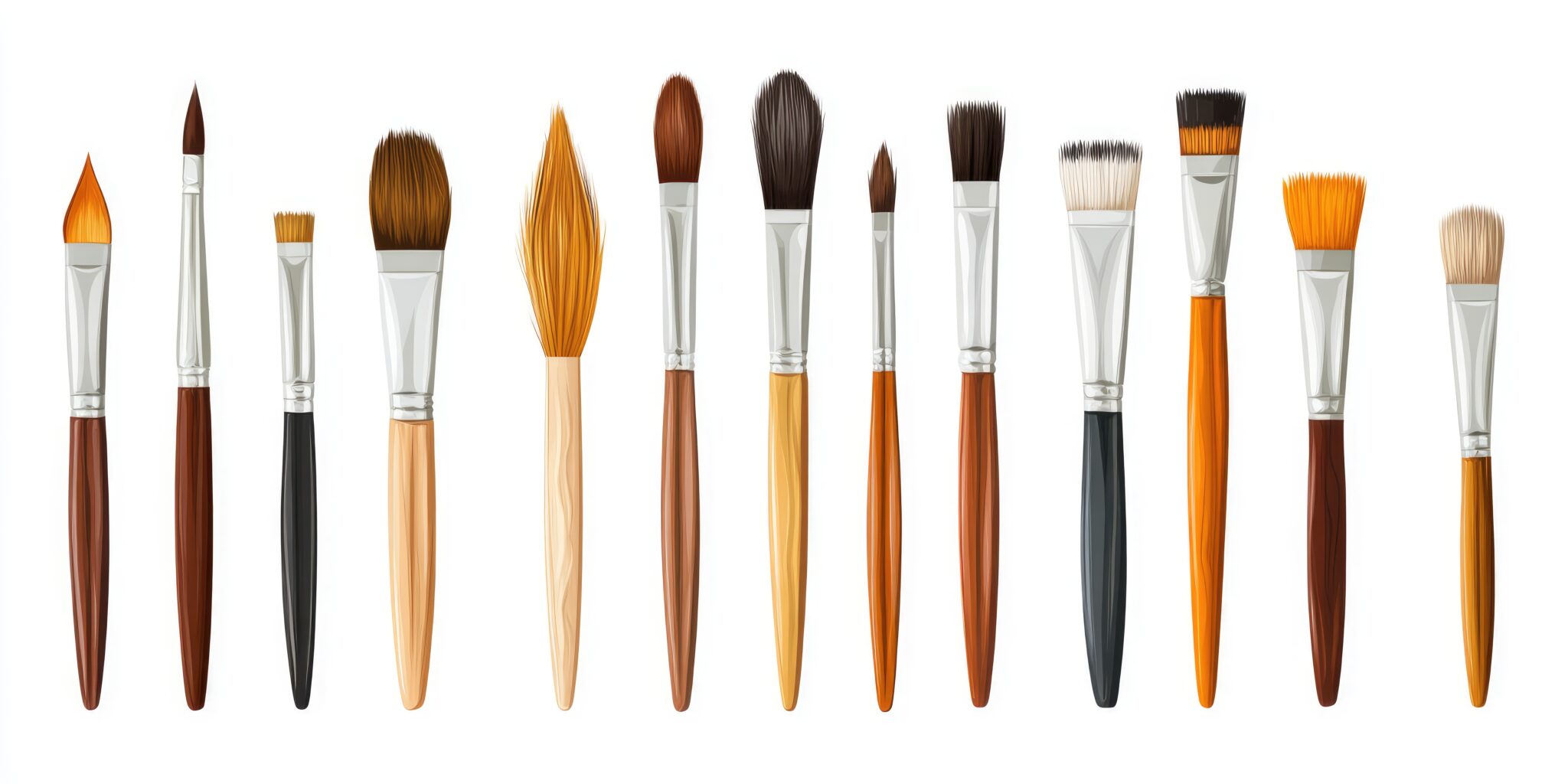The shape of a paintbrush plays a crucial role in an artist’s ability to express their style and achieve specific effects in their artwork. Each type of brush comes with unique characteristics that influence the fluidity of strokes, the texture of applications, and the overall outcome of a painting. In this guide, we will explore various brush shapes, their dynamics, and how they affect painting style and technique.
1. Common Brush Shapes and Their Influences
A. Flat Brush
Characteristics:
- Shape: Rectangular head with straight edges.
- Bristle Arrangement: Typically stiffer bristles.
Influence on Style:
- Bold Strokes: The flat brush allows for broad, confident strokes, making it ideal for covering large areas quickly.
- Defined Edges: Use flat brushes for precision in creating sharp lines and clear edges, perfect for architectural designs or geometric shapes.
- Texture Creation: The side of a flat brush can add unique textures and patterns, especially when used with a dry-brushing technique.
B. Round Brush
Characteristics:
- Shape: Tapered and circular, allowing for a variety of stroke widths.
- Bristle Arrangement: Soft to stiff bristles, depending on the type.
Influence on Style:
- Versatility in Strokes: The round brush is excellent for both detailed work and broader strokes, allowing artists to create dynamic compositions with varying line weight.
- Lifelike Elements: Use round brushes to capture organic shapes in nature, such as flowers and leaves, due to their ability to mimic the natural flow of forms.
C. Filbert Brush
Characteristics:
- Shape: Oval with rounded edges, blending characteristics of both flat and round brushes.
Influence on Style:
- Soft Blending: The unique shape is ideal for softer transitions and blending, making it suitable for portraiture and landscapes where smooth gradients are desired.
- Detail and Coverage: Perfect for adding subtle details while still allowing for broader strokes, making it a versatile choice for various painting styles.
D. Angular Brush
Characteristics:
- Shape: Slanted head allows for diverse angles in stroke application.
Influence on Style:
- Geometric Design: This brush is ideal for creating diagonal lines and angular shapes, allowing for precise edges and sharp contrasts.
- Layering and Blending: The angle helps with blending colors at unique angles, adding depth and interest to compositions.
E. Rigger Brush
Characteristics:
- Shape: Long, thin bristles designed for fine detailing.
Influence on Style:
- Precision and Detail: Rigger brushes excel in intricate line work, making them ideal for adding fine details such as tree branches or hair.
- Fluidity in Lines: Their ability to hold a large amount of paint allows for continuous strokes that can convey movement and fluidity in the artwork.
2. The Impact of Brush Shape on Technique
A. Control and Movement
- Different brush shapes grant different levels of control for the artist. For instance, a round brush allows for more fluid movement compared to a flat brush, which is more suited for structured strokes.
- Artists can choose brush shapes based on the emotional quality they want to impart in their work—a softer round brush might create gentle, flowing lines, while a flat brush might evoke strength and boldness.
B. Texture and Depth
- The textural qualities created by various brushes can significantly affect the depth and overall dimension of a painting.
- A filbert brush can create a soft texture that enhances the tactile quality of elements, while a rake brush with shorter bristles can produce jagged textures—both adding individual character to a piece.
C. Style Adaptation
- Understanding brush dynamics encourages artists to experiment with different shapes and styles, thus expanding their artistic language.
- Artists who adapt their brush choices to fit their unique visual language may find they can communicate their ideas and emotions more effectively.
3. Experimenting with Brush Shapes
- Try Mixing Brush Types: Combining different brushes in a single work can produce interesting contrasts and complementary effects. For instance, layering flat and round brushes can balance bold backgrounds with intricate details.
- Practice Techniques: Spend time practicing with various brushes. Experimenting with swirling motions using a round brush, dragging a flat brush for texture, or detailing with a rigger can lead to discovering new techniques and styles.
- Document Your Process: Keep a sketchbook or a portfolio where you document different outcomes with each brush type. This can help you refine your technique and develop a unique personal style.
4. Conclusion
The shape of a brush profoundly impacts an artist’s painting style, guiding the movement, texture, and emotional expression throughout the work. By exploring the characteristics of different brush shapes—flat, round, filbert, angular, and rigger—artists can choose tools that enhance their creative vision. Understanding brush dynamics not only promotes technical skill but also encourages artistic freedom and experimentation.
Explore our extensive selection of brushes suited for every style and technique at urartstudio.com to find the right tools for your creative journey!
Be sure to visit our online store at https://urartstudio.com/shop/ for a variety of art supplies and tools. Additionally, check out valuable painting tips at urartstudio.com/painting-tips/ and our step-by-step painting instructions at https://urartstudio.com/step-by-step-painting-instructions/ to further enhance your skills.
Keywords: brush shapes, painting techniques, brush dynamics, art supplies.
#BrushDynamics #PaintingStyles #ArtTechnique #ArtSupplies #ArtistTools



Leave a Reply
You must be logged in to post a comment.